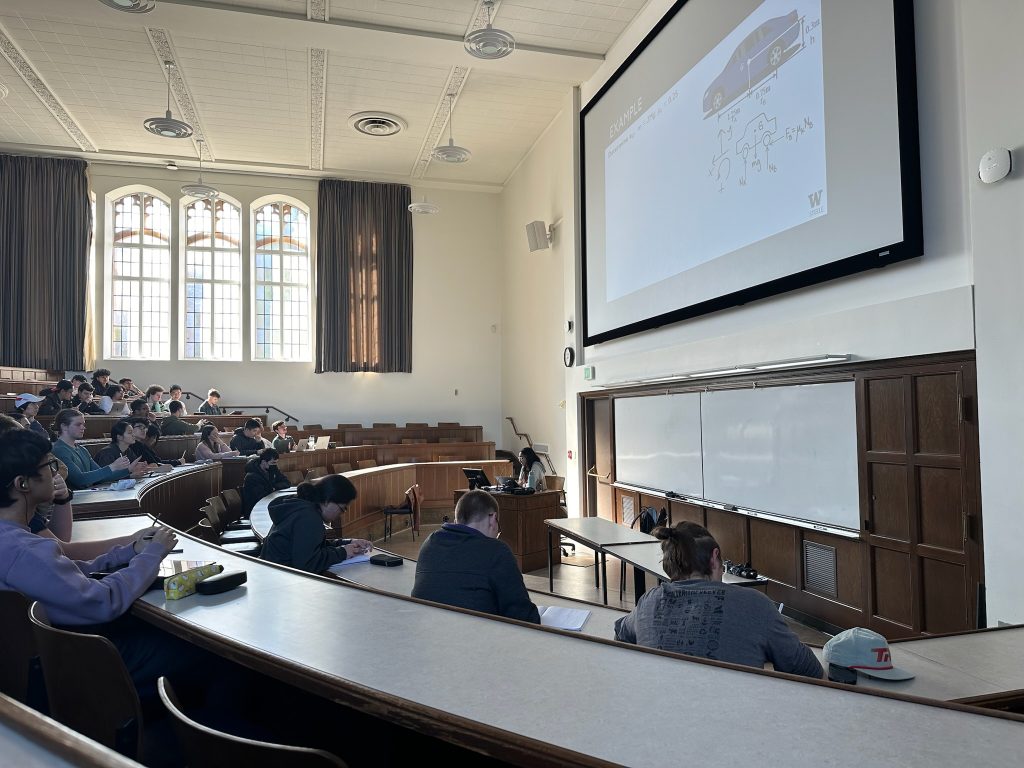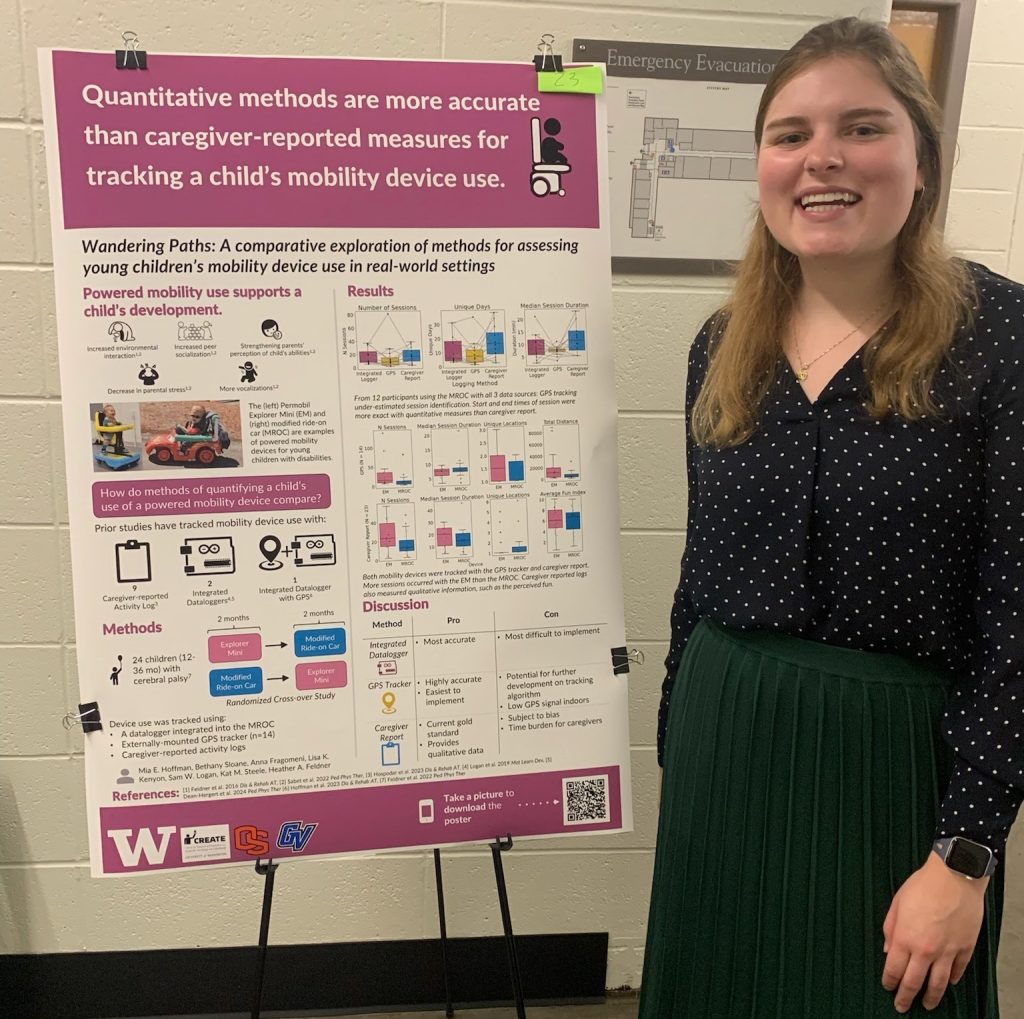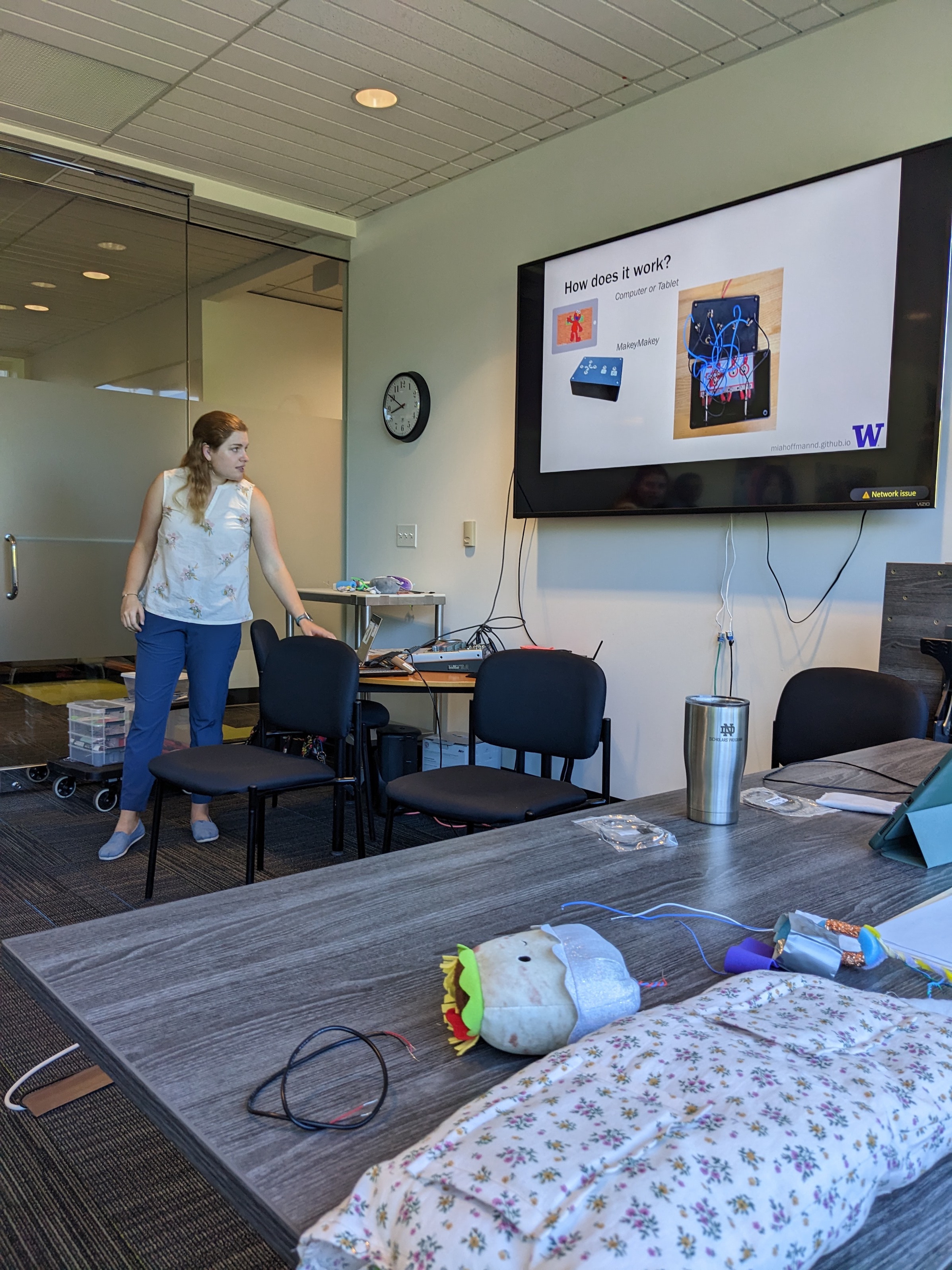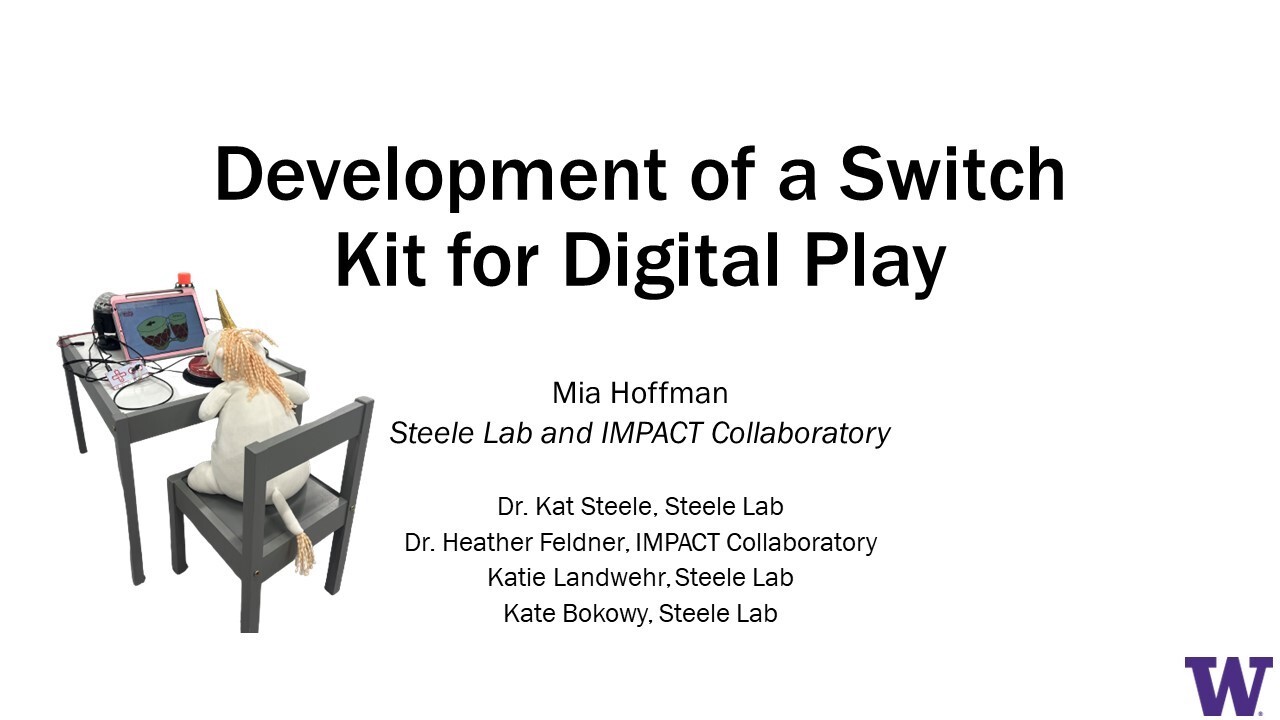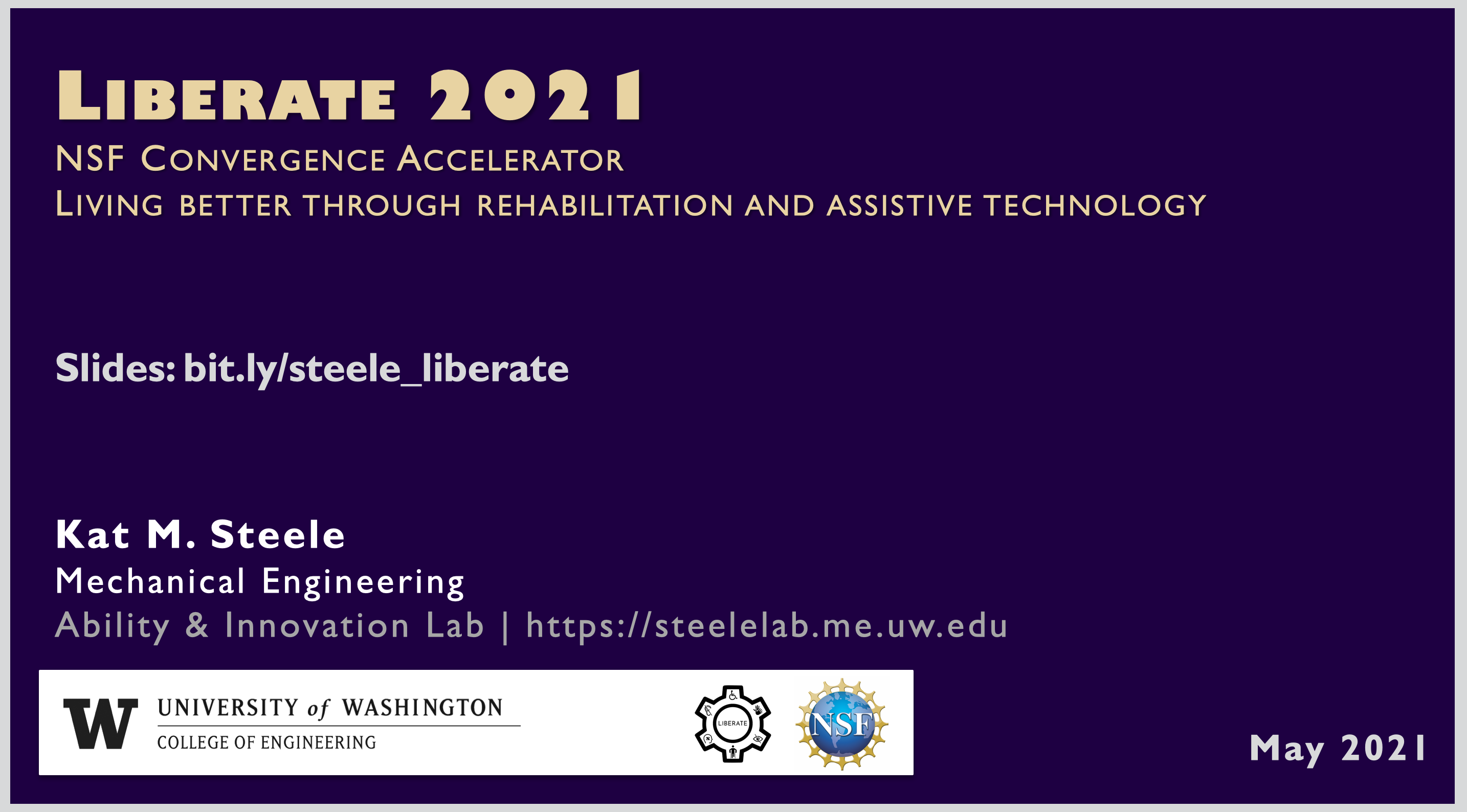Here’s a look at what some of our lab members have been up to this quarter – in the lab, around campus, and out in the community!
January:
Steele lab members, Mia, Kate, Alisha, and Katie volunteered at a UW GoBabyGo (GBG) Build Workshop. GBG is a community-based outreach program that works with families, clinicians and industry partners to provide pediatric mobility equipment to children with disabilities. The primary mission of GBG is to provide modified ride-on cars to these children to use as a powered mobility device for fun, function, and exploration.
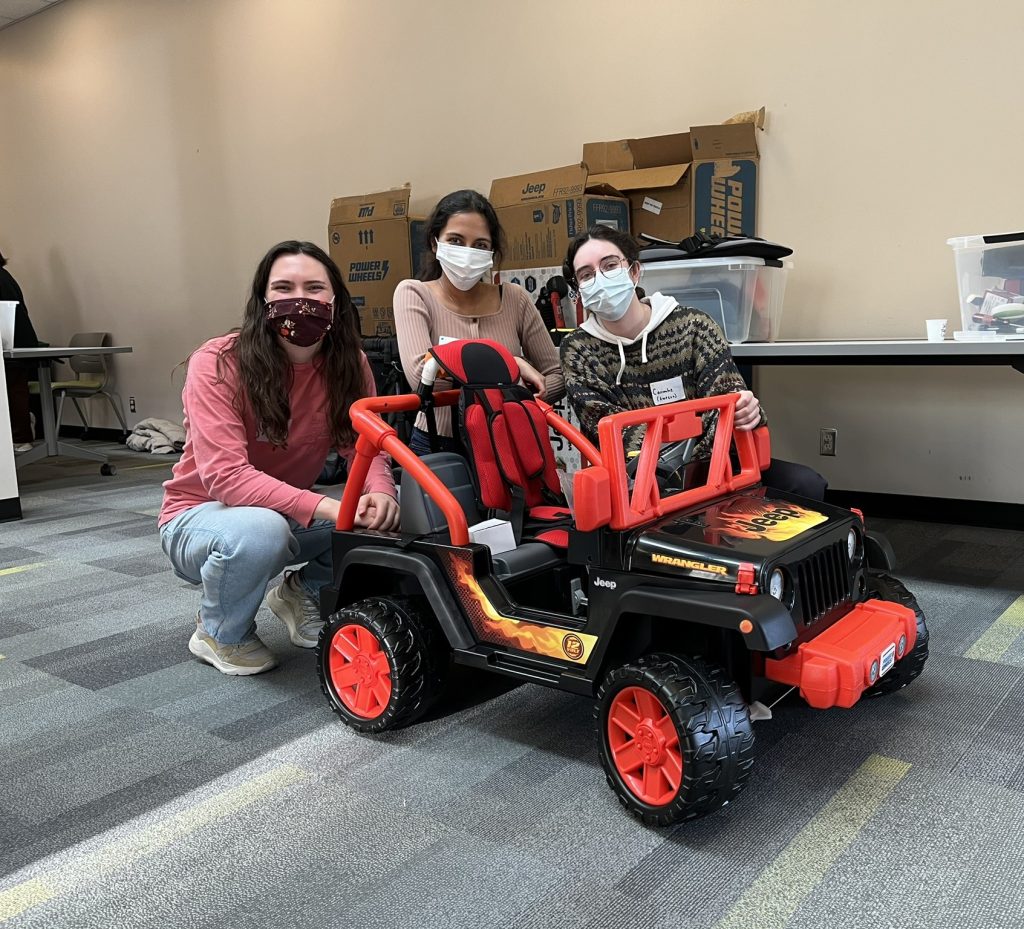
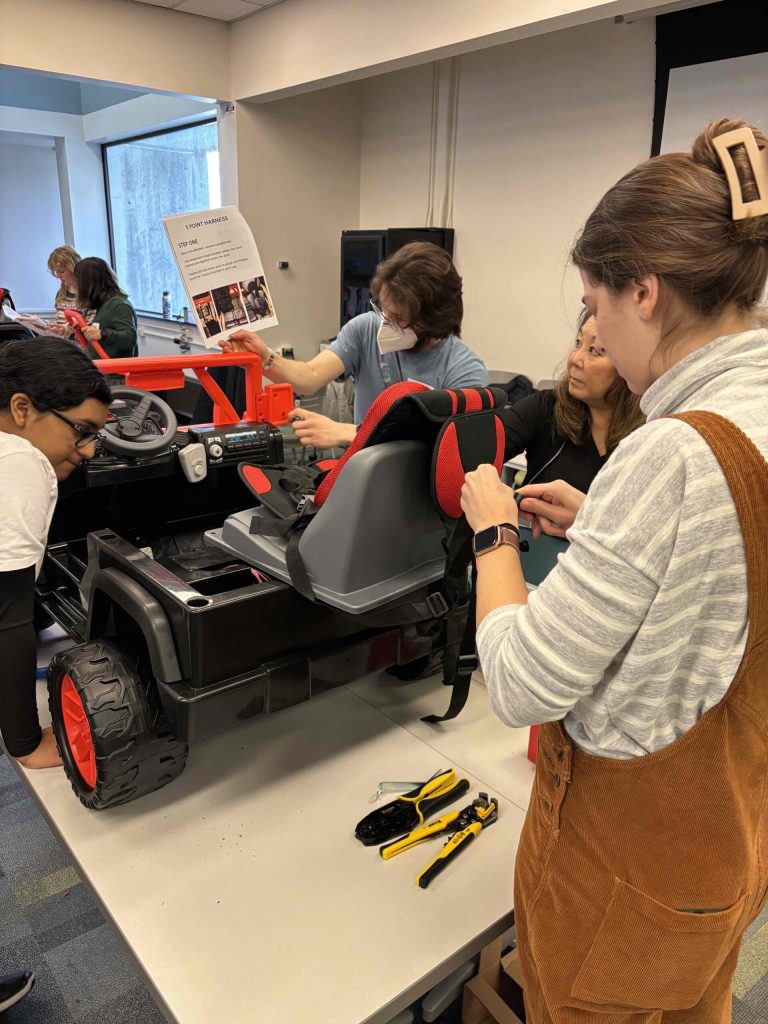
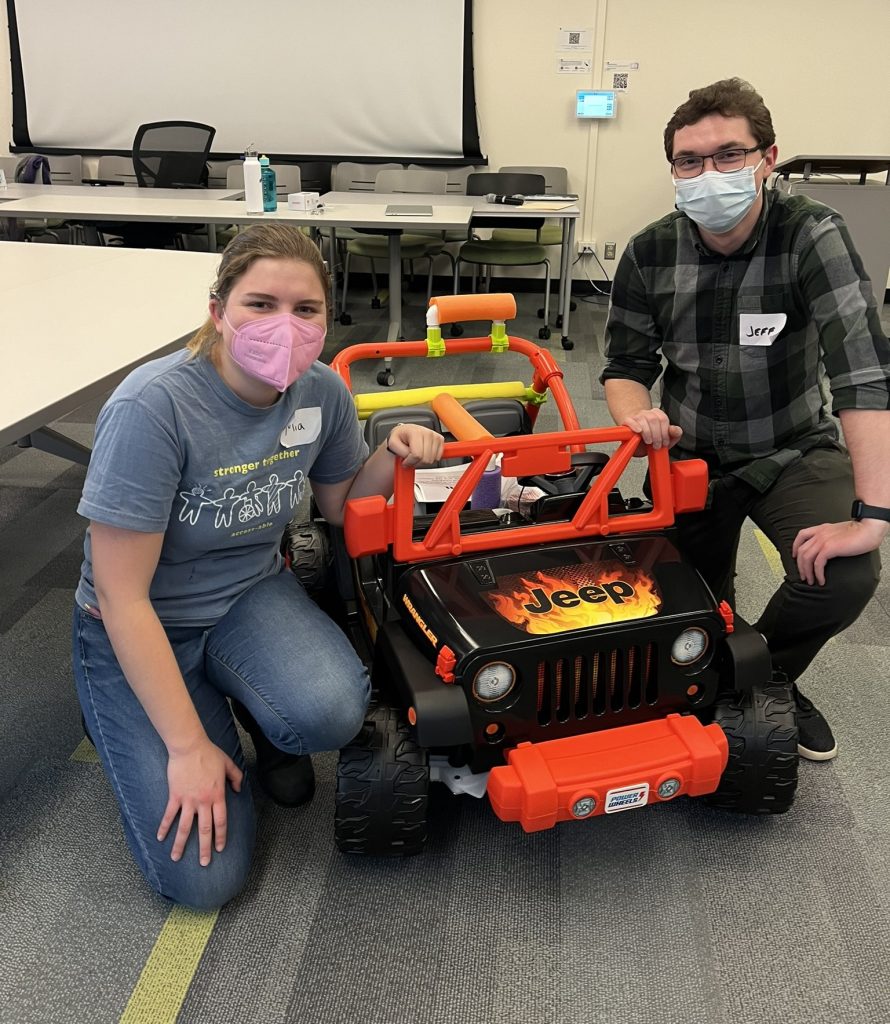
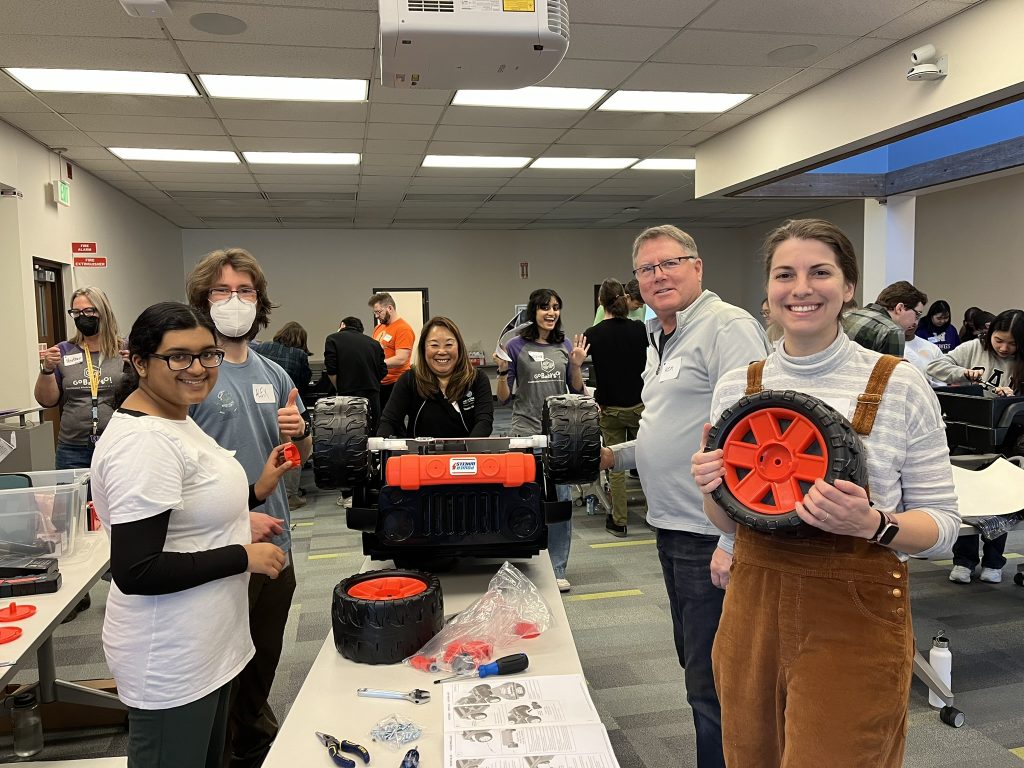
February:
Lab members, Kate, Mia, and Megan volunteered at the Special Olympics Regional Alpine & Snowboarding Competition at the Summit at Snoqualmie.
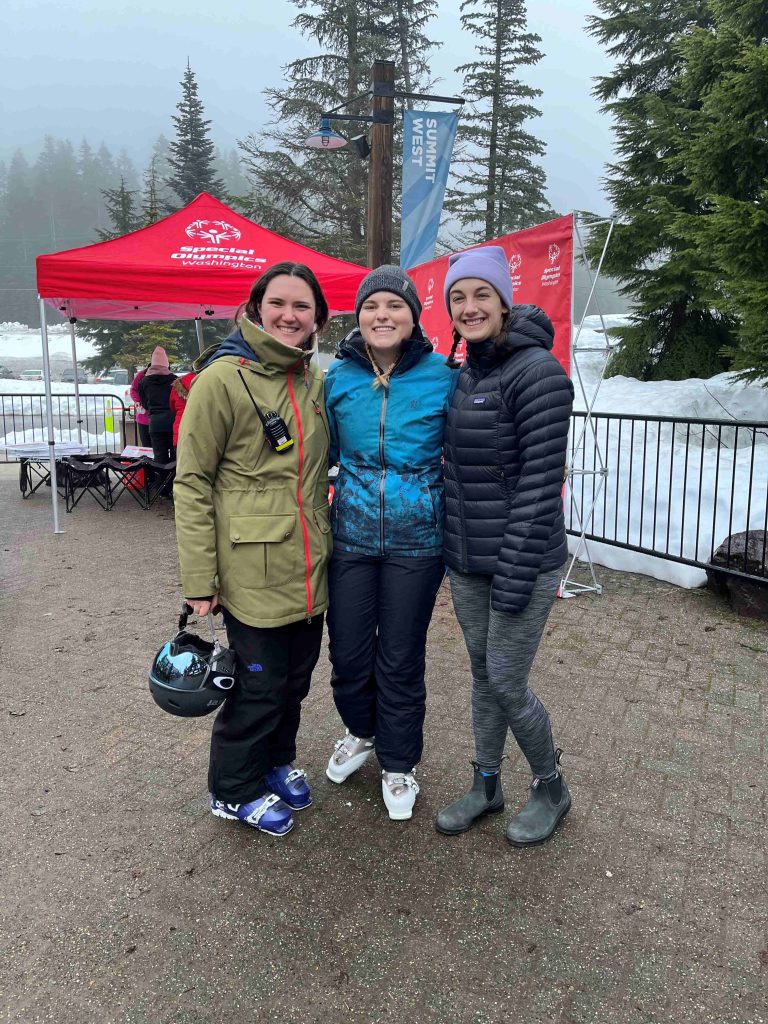
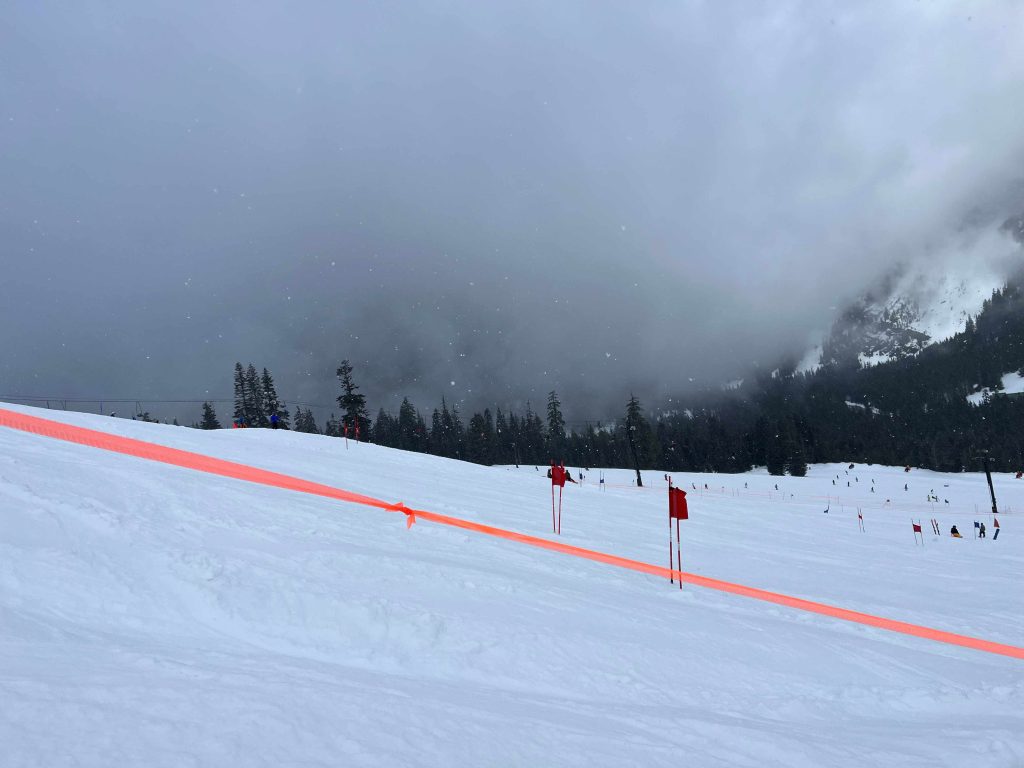
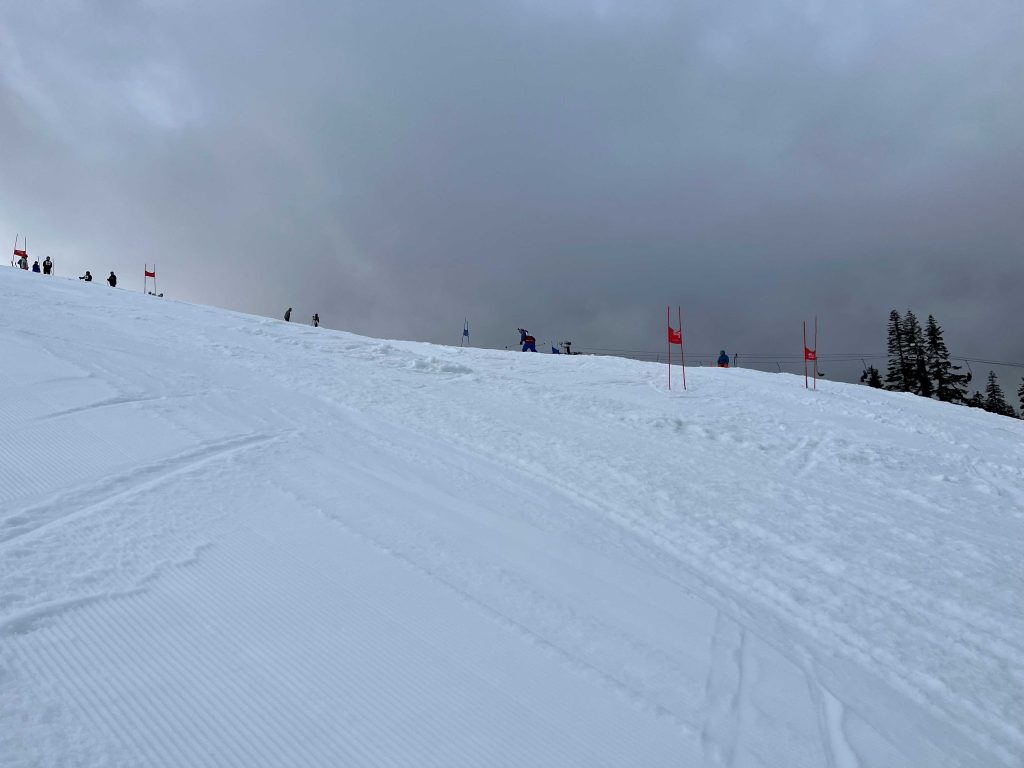
Also in February:
As part of her duties as a TA this quarter, Mackenzie Pitts gave a Dynamics (ME230) lecture to a 200-person class. She crushed it.
March:
Mia Hoffman presented a poster on “Quantitative methods are more accurate than caregiver-reported measures for tracking a child’s mobility device use” at the Mechanical Engineering Graduate Association Poster Competition.
Also in March:
The iconic UW Cherry Blossoms graced us with their presence. Photos captured by local photographer and lab member, Megan Ebers.




